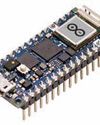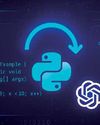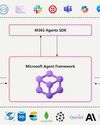試す 金 - 無料
Netbooting a Large Language Model-based OS in an Ubuntu Live Server
Open Source For You
|March 2025
This brief tutorial explores the wireless netbooting of the LLM model Gemini AI in an Ubuntu server.

With the rapid advancement of artificial intelligence, large language models (LLMs) require specialised operating systems that optimise resource utilisation, ensure efficient model execution, and facilitate seamless deployment across various hardware architectures. An LLM OS is designed to meet these demands by providing a streamlined environment tailored for AI workloads, incorporating high-performance computing, distributed processing, and low-latency networking. Given the extensive computational and storage requirements of LLMs, netbooting presents a practical solution for deploying an LLM OS without relying on local storage. By leveraging network-based booting mechanisms such as PXE (Preboot Execution Environment), TFTP (Trivial File Transfer Protocol), and NFS (Network File System), an LLM OS can be centrally managed, rapidly provisioned, and dynamically updated. This approach not only reduces hardware dependencies but also ensures uniformity across multiple AI nodes, making it ideal for large-scale AI research, data centres, and enterprise deployments.
AI and LLM integration with netbooting
 AI-based LLMs are enabling advanced natural language processing (NLP) capabilities that help organisations extract insights from massive datasets, automate content generation, and enhance customer support systems. Deploying an OS that directly boots into an interactive TTY-based LLM model can eliminate unnecessary overhead from traditional installations and significantly reduce boot times. By leveraging containerised environments such as Docker or Singularity, organisations can dynamically load AI models like Llama 2, GPT-based models, or BERT directly from network-attached storage without requiring individual local installations.
AI-based LLMs are enabling advanced natural language processing (NLP) capabilities that help organisations extract insights from massive datasets, automate content generation, and enhance customer support systems. Deploying an OS that directly boots into an interactive TTY-based LLM model can eliminate unnecessary overhead from traditional installations and significantly reduce boot times. By leveraging containerised environments such as Docker or Singularity, organisations can dynamically load AI models like Llama 2, GPT-based models, or BERT directly from network-attached storage without requiring individual local installations.このストーリーは、Open Source For You の March 2025 版からのものです。
Magzter GOLD を購読すると、厳選された何千ものプレミアム記事や、10,000 以上の雑誌や新聞にアクセスできます。
すでに購読者ですか? サインイン
Open Source For You からのその他のストーリー

Open Source For You
The Role of Open Source in Building Modern Data Infrastructure
It's no secret that open source is emerging as the backbone of modern data infrastructure. Here’s a list of the core open source technologies used to deploy this infrastructure, along with some real-world examples and a brief on why open source matters.
3 mins
December 2025

Open Source For You
The Whispering Machines: How Open Source is Bringing Intelligence to the Tiniest Devices
Built on open source frameworks, TinyML is enabling complex machine learning models to run on the microcontrollers embedded in connected devices, bringing artificial intelligence to the very edge of the network.
3 mins
December 2025

Open Source For You
Setting Up Snort to Secure Your Network
Snort is a popular, open source intrusion detection system that monitors traffic in real time to detect malware. Here’s a detailed explanation of how to set it up on Ubuntu and test it by generating traffic from another system.
7 mins
December 2025

Open Source For You
When AI Meets DevOps to Build Self-Healing Systems
Traditional DevOps, with its rule-based automation, is struggling to work effectively in today’s complex tech world. But when combined with AlOps, it can lead to IT systems that predict failures and solve issues without human intervention.
7 mins
December 2025

Open Source For You
How to Automate Java Code Modernisation
This short guide illustrates that automating Java code modernisation with Python and OpenAI API is not just possible-it's remarkably effective.
5 mins
December 2025

Open Source For You
The Quest to Build a Quantum Computer
The road to large-scale quantum computing is long and hard, with incremental advances paving the way. But the destination is in sight.
12 mins
December 2025

Open Source For You
Job Opportunities: What's Hot in the Cloud Space?
If there's one field that refuses to slow down, it's cloud computing. Even as automation and AI reshape roles, cloud adoption continues to surge. From startups deploying microservices overnight to enterprises migrating decades of legacy systems, cloud remains the engine of digital transformation. For professionals, this means one thing: skills that live in the cloud won't come down anytime soon.
2 mins
December 2025

Open Source For You
Securing Client Identity with Post-Quantum Cryptography
Here's a quick tutorial on how to build a secure, real world client-server model that establishes client identity by using CRYSTALS-Dilithium, a post-quantum cryptography algorithm.
3 mins
December 2025

Open Source For You
Unlocking the Power of Multi-Agent Solutions with the Microsoft Agentic Framework
The Microsoft Agentic Framework is rapidly emerging as a cornerstone for developers, architects, and technology leaders seeking to build dynamic, intelligent systems powered by multiple collaborating agents. In an era where automation, distributed intelligence, and adaptive software are increasingly vital, this framework offers robust tools and features to accelerate the design and deployment of agent-based solutions.
6 mins
December 2025

Open Source For You
Apache Iceberg and Trino: Powering Data Lakehouse Architecture
Apache Iceberg is a cornerstone of any open data lakehouse, providing the transactional foundation upon which highly scalable and flexible analytics can flourish. Along with Trino, it can be used to build a robust, scalable, and high-performance data lakehouse.
4 mins
December 2025
Listen
Translate
Change font size
